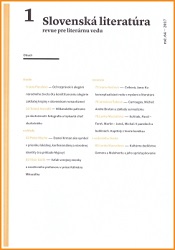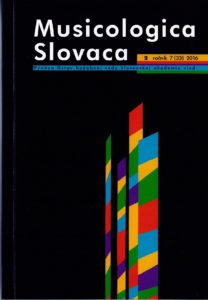
Od rozprávok k alegórii národného života (Ku konštituovaniu alegórie zakliatej krajiny v slovenskom romantizme)
The paper is concerned with establishing the allegory of a cursed country in Slovak Romanticism, which is one of the defining signs in the works by the poets of the so-called Levoča School, however, their sphere of action was actually (as it is demonastrated in the material processed) considerably wider. The goal of the paper is to show when, in what way and through what mechanisms an originally neutral and general term, which was and still is an integral part of the language schemes (in the general sense, featuring a potentially implicit reference to the Bible – a curse), has transformed to one of the defining motifs of the Romantic topics, what way, in what forms and functions, it has become part of the mythic and poetic image (simile, symbol, allegory) and what mechanisms made it possible for the term to develop a form of one of the Slovaks´ best-known national myths.
More...





